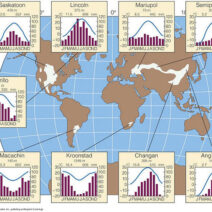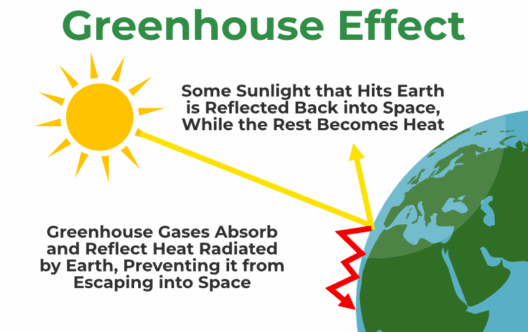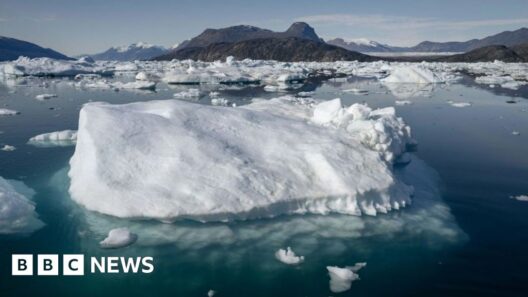What is the Definition of Climate? Simply Explained
Imagine stepping outside and feeling a warm breeze on your face. Perhaps there’s a thin layer of humidity in the air, signaling a tropical afternoon. Now, how would you describe this condition? Is it merely the weather, the immediate state of the atmosphere, or is there something deeper at play? This playful inquiry leads us to understand climate—a complex concept that encompasses much more than just the day-to-day fluctuations we experience.
When we speak of climate, we refer to the long-term patterns and averages of weather in a particular region over an extended period, generally 30 years or more. It is the overarching narrative of atmospheric conditions: the highs and lows of temperature, the frequency of precipitation, and the intensity of seasonal changes. In essence, climate offers a multidimensional perspective on what we can generally expect from a particular environment throughout the year.
In our modern age, where unpredictable weather patterns seem to dominate, understanding climate is not merely an academic exercise; it is increasingly critical to our survival. So, let’s dive deeper into what exactly encompasses this idea of climate.
The Various Components of Climate
To fully grasp the breadth of climate, one must consider its multiple components. These elements combine to create the distinctive characteristics of an area’s climate.
Temperature: The Backbone of Climate
Temperature is arguably the most significant aspect of climate. Over time, average temperatures define a region’s climate type—be it tropical, temperate, polar, or arid. These thermal readings influence not only the immediate environmental conditions but also the biogeographic distribution of flora and fauna.
Precipitation Patterns: The Water Balance
Precipitation, which includes rain, snow, sleet, and hail, is crucial for sustaining ecosystems. Different climates receive varying amounts of precipitation, which plays a vital role in determining the types of vegetation that can survive in an area. For instance, deserts may receive less than 250 millimeters of rain annually, resulting in sparse vegetation, while tropical rainforests can see over 2,000 millimeters of rain, fostering lush biodiversity.
Wind and Atmospheric Circulation: The Invisible Architects
Wind patterns and atmospheric circulation contribute significantly to climate by redistributing heat and moisture across the planet. The movement of air masses and ocean currents shapes regional climates, impacting everything from rainfall to seasonal temperature variations.
Understanding Climate Zones
To make sense of the myriad climates around the globe, scientists have developed systems to categorize them into specific climate zones. The Köppen climate classification is one of the most widely used systems that divides the Earth into five primary climate zones, each further subdivided based on temperature and precipitation. These include:
The Tropical Climate: Characterized by consistently high temperatures and ample rainfall, the tropical climate is home to some of the world’s most biodiverse ecosystems, including coral reefs and rainforests.
The Arid Climate: Deserts fall into this category. With little rainfall and extreme temperature shifts between day and night, these climates pose unique challenges for life.
The Temperate Climate: This climate zone experiences distinct seasonal changes, with warm summers and cold winters. It’s prevalent in regions such as Europe, East Asia, and parts of North America.
The Polar Climate: Characterized by frigid temperatures and minimal precipitation, polar climates are home to unique flora and fauna adapted to extremely harsh conditions.
The Continental Climate: This zone is marked by significant temperature variations between seasons, reflecting the climate found in areas situated far from large bodies of water.
The Importance of Climate in Human Life
Climate is not merely a scientific concept; it has profound implications for human life and society. Agriculture, for instance, is deeply influenced by climate. Variations in temperature and precipitation can determine crop yield, impacting food security across the globe.
Furthermore, climate has a monumental impact on water resources. Regions with chronic water shortages face immense challenges, including social upheaval and displacement. Conversely, areas that experience heavy rainfall can endure flooding, causing destruction and loss of life.
Climate Change: The Emerging Challenge
As the Earth’s climate undergoes significant changes primarily due to human activities—such as burning fossil fuels and deforestation—understanding the definition of climate becomes even more critical. What happens to a region’s climate when average temperatures rise? What ramifications does this have for both natural ecosystems and human societies? The answers to these questions reveal the interconnectivity of climate with broader environmental concerns.
Climate change manifests itself through alterations in weather patterns, sea-level rise, and shifting agricultural zones. As polar ice melts, coastal areas face increased flooding and erosion, impacting millions of lives. This emerging challenge takes us beyond definitions and into the realm of action, urging us to adopt sustainable practices to mitigate further damage.
In Conclusion
The question—what is climate?—invites a layered exploration of the systems that dictate the natural world around us. As we unravel the complexities of climate, we gain insights necessary for navigating the challenges of the future. By understanding climate, we equip ourselves with the knowledge to advocate for sustainable practices and preserve our environment for generations to come. Ultimately, recognizing that climate is not a static entity but a dynamic one prompts a collective responsibility to act in both personal and communal spheres.







